- Expert advice/
- Getting engaged/
- Rings/
- A Guide to Wedding Rings
- Rings
A Guide to Wedding Rings
From how much you should expect to spend on a wedding ring to tips for how to choose the right one for you, check out this guide on wedding ring styles, types, and materials.
Last updated February 5, 2024

The First Look ✨
- There are many factors to consider such as cost, band width, band finish, and if you want matching rings or not with your partner.
- Although there is a lot of thoughtful planning when it comes to pick out your wedding ring, this is a place for customization and for you and your partner to pick the perfect set that suits you!
The big day is coming up but you still have to find the perfect wedding ring - don’t fret! Zola's put this guide together just for you.
Tips for Choosing a Wedding Ring
1. Start Looking Early
Allow yourself plenty of time to shop for and select a wedding ring. If you’re going to buy a ring from a brick-and-mortar or online jeweler, two to three months before your wedding date should allow you enough time to shop around, compare prices, order, and receive your rings in time. If you’re going for a totally custom ring, however, allow yourself even more time (at least six months). Engraving your wedding ring(s) will also add an additional month to your timeline.
2. Set a Budget
Before you set foot into a jewelry shop or begin looking online, set a wedding ring budget. Much like shopping for a wedding dress, having a dollar amount in mind before you begin your search will help you avoid the heartache of falling in love with something that’s way out of your price range. See the below section (How Much Should You Spend On A Wedding Ring?) for the average cost of wedding rings for both men and women, and determine with your partner what you’re both comfortable spending—in the grand scheme of all your wedding expenses—on wedding rings.
3. Think About Your Engagement Ring
If you’ll be wearing an engagement ring on the same finger as your wedding ring, you should consider how these two pieces of jewelry will interact. You want both rings to complement each other physically, and to fit comfortably together on your finger. There’s no rule that says your engagement ring and wedding band need to match exactly, but perhaps you want them made out of the same material (which also helps reduce potential reactions between metals), or perhaps you want one ring to be more simple and the other to be the standout piece with more stones and decoration.
If you do want your engagement and wedding rings to be a set, make this wish known to your partner when he or she is choosing an engagement ring—some rings and bands are contoured to fit together perfectly, and you could even score a better deal when buying both rings at the same time.
4. Consider Your Lifestyle
Do you exercise frequently, spend time outside gardening or swimming, or work with your hands daily? If you have an active lifestyle, you should think about which wedding ring design and material will be the most practical choice. A wedding ring with many diamonds or other small stones will require more frequent cleaning and maintenance, and should be protected from harsh chemicals or lots of banging and jostling. More simple bands in metals that are super-strong and scratch-resistant, like palladium, titanium, tungsten, or even silicone, are good choices for those who want to wear a wedding band daily without worrying about its upkeep.
5. Decide If Your Rings Will Match
The coordination decisions don’t stop at your engagement ring. It’s a good idea to decide with your partner whether you’d like matching wedding bands before you begin shopping. For some couples, sharing every aspect of this symbol of eternal love—down to the color, look, and shape—adds an extra layer of romance. For others, matching bands don’t hold any additional significance, so each partner might prefer to express his or her individuality when it comes to wedding rings.
6. Narrow Down Your Ring Style
After thinking about your budget, what will work best with your engagement ring and your lifestyle, and yay or nay to matching bands, research different styles of wedding rings to home in on your preferences. Do you want a simple metal band, or a ring set with diamonds or other gemstones? Do you want a thin or thick band, something very traditional, or something more trendy and eye-catching? Look around at examples so you can begin your wedding ring shopping well-informed with a sense of your preferred styles.
How Much Should You Spend on a Wedding Ring?
While the cost of a wedding ring can vary wildly based upon the ring’s material, style, and decorative elements, it can be helpful to have a ballpark range for what most couples are spending on their wedding rings. These averages can help you set realistic expectations and allocate an appropriate amount towards wedding rings in your overall wedding budget.
-
For women’s wedding bands, a plain band can cost anywhere from $300 to $1,500 depending on the metal. Prices increase to between $1,000 to $6,000 for a band that’s larger, more intricate, or set with diamonds or other stones. The average price of a woman’s wedding ring is around $1,400.
-
A men’s wedding band can start as low as $100 for a plain titanium band, to over $2,000 for a platinum band, with the average price being around $560.
In general, rings made of platinum will always cost more due to the more expensive nature of the metal—but platinum rings will last forever without any required maintenance. White or yellow gold are less expensive options, with prices decreasing by the carat number (lower carat golds are less expensive than higher carat golds). However white gold will need to be rhodium-plated every few years as the metal wears down and turns yellow. Palladium is another great, low-cost alternative to white gold and platinum that is largely maintenance-free.
Elements of a Wedding Ring
After reading these helpful descriptions about the different elements that go into the design of a wedding ring, you’ll be a ring connoisseur.
Wedding Band Width
Ring bands come in varying widths from thin to thick. Besides affecting the overall aesthetic of the ring, a band’s width may also affect its comfort level, since it determines the amount of space being covered on your finger. Try on rings in different widths to be sure you’re choosing the right width for your finger (and for your engagement ring, if you’ll be wearing the two together. Here is the breakdown for a band’s size based on width:
- Thin: 1-3mm
- Medium: 4-6mm
- Thick: 7-10mm
Wedding Band Profile
The profile of a wedding band describes the shape of both the inside and outside of the ring. While there are several profile options, some are more popular than others. All ring profiles will affect the comfort of the ring, as it directly affects how the ring will rest on your finger.
- Court: this profile is the most traditional shape, with rounded corners both on the inside and outside of the ring that produce a comfortable fit.
- D-Shape: a D-shape ring is flat on the inside and rounded on the outside. It’s also very comfortable where the ring sits on the finger, and is a second traditional option.
- Flat: exactly how it sounds, a flat profile is flat on all sides. A flat ring looks chunky and substantial, but can require some getting used to fit-wise.
- Flat Court: a edgy profile with a more comfortable fit, a flat court ring looks flat from the outside but has a rounded inner edge.
- Flat-Sided Court: a flat-sided court ring is exactly like it sounds: a court ring (rounded inside and out) with flat sides. The flat sides give the ring a less domed profile, and also make it a good choice to rest alongside an engagement ring.
- Halo: a halo profile creates a band that is perfectly spherical all the way around. It’s one of the older and more classical shapes, as it was the easiest to design and make back in the day.
- Concave: another aesthetic choice, a concave ring has a rounded interior and a concave exterior for a unique band appearance.
Wedding Band Finish
From shiny to matte, a ring’s finish has less to do with comfort and more to do with looks. Here are some popular types of wedding band finishes:
- Mirror: a polished finish with a shiny, reflective surface
- Fine Matte: a non-reflective, misty finish that doesn’t show any texture; created by tiny scratches in the surface.
- Coarse Matte: a non-reflective finish with visible texture; created by deeper scratches and embellishment on the surface.
- Hammered: a textured finish where the metal has been “hammered” to look dented all over.
- Sandblast: a textured finish caused by high-pressure sandblasting, resulting in a grainy appearance.
- Stardust: a more subtly textured finish with mixed areas of partial polish and partial sandblasting for a sparkling effect.
Wedding Ring Styles
It’s impossible to put together an exhaustive list of wedding ring styles, because the options out there are practically limitless. From simple, unadorned bands to complex designs featuring diamonds, etching, and mixed metals, you can most likely find any wedding ring you can dream up in your imagination. Here are some general wedding ring style categories that might help you understand, and then narrow down, the possible choices to find the look that’s right for you.
Minimalist Wedding Ring
Minimalist wedding rings are simple, often just plain bands with little to no adornment. More embellished minimalist rings might include a row of small diamonds, a twisted rope or a flat-edge design, or an interesting textural finish. Minimalist wedding bands are great as subtle accents to more statement-making engagement rings.
Diamond Wedding Ring
Diamond wedding rings include one or multiple diamonds in their design. See below for an explanation of different types of stone settings—each of these settings shapes the final look of the ring. From rows of tiny pavé diamonds to larger stones set within channels or bars, a diamond wedding band adds a touch of sparkle and luxury to your ring set.
Eternity Wedding Ring
An eternity band is a type of diamond wedding ring, but is distinctive in that the diamonds encircle the entire band instead of just being placed in the front half. Eternity bands can be expensive due to the number of stones required, but are beautiful statements of elegant symmetry. They are great choices for those who want to just wear a statement wedding band, rather than an engagement ring-band combo.
Enhancers Wedding Ring
Enhancers are two separate (top and bottom) rings designed to curve around and, well, enhance an engagement ring. Enhancers can come in a variety of metals and colors, and frequently include additional diamonds or stones. Some brides choose to solder together their enhancers and engagement ring for one large, unified ring.
Matching Wedding Ring
As we’ve discussed, matching wedding rings are his-and-hers sets of bands that either complement or exactly mimic each other. You can match your partner’s band by metal, by color, or by stone—the style possibilities are as endless as the love commitment they represent.
Engraved Wedding Ring
Engraved wedding rings include a touch of extra personalization in the form of your names, wedding date, and/or a short message engraved on the interior of the band. If having an engraved wedding ring is important to you and your partner, be sure you choose a ring style that can accommodate engraving, both in width and in material.
Types of Wedding Band Stone Settings
Channel Setting
In this setting, gemstones sit side-by-side in a “channel” formed by a top and a bottom track of precious metal. The stones are flush with the ring’s exterior, rather than protruding out from it.
Pavé Setting
Pavé means “paved” in French, and this setting aims to “pave” the ring with tiny diamonds by setting them very closely together. The stones are secured with small beads or mini-prongs that are minimally visible. Pave settings create abundant sparkle factor.
Micro-Pavé Setting
The same concept as pavé, but with even smaller stones. Micro-pavé settings include stones that are smaller than 0.1 - 0.2 carats, which is the size usually used in pavé-set rings.
Bar Setting
Gemstones are separated by metal bars in this setting, which is most often seen in diamond wedding bands or other rings where the stones form a continuous circle around a large portion of the ring.
Shared Prong Setting
Diamonds or other gems placed side-by-side other share prongs in this setting. Shared prongs make sense for rings that contain a long row of adjacent stones, as less metal means room for more stones.
Flush Setting
Also known as a “gypsy” setting, the stone here is inset into a hole in the band so that it’s flush with the metal. A flush setting can look very modern, or more antique, depending on the metal and style, but either way this setting is great for protecting the stone.
Types of Wedding Band Materials
Choosing the metal for your wedding ring is one of the biggest decisions you’ll have to make when it comes to buying wedding bands. The metal will affect not only how the ring looks, but how it wears, what kind of maintenance is required, and the price of the ring. Get a leg up on your wedding ring metal research with these helpful descriptions.
The Precious Metals
-
Yellow Gold
Yellow gold is the warm-hued metal that’s associated with traditional wedding rings. Gold comes in different karat weights, which indicate its purity: the higher the karat weight, the more pure gold is present in comparison to other alloys, and the harder and more expensive it is. Gold is easy to repair and polish, but is also the most malleable precious metal.
-
White Gold
White gold is yellow gold that’s been alloyed with palladium and silver to achieve a polished shine, and then plated with rhodium to provide a layer of protection and a bright, white appearance. Rhodium plating does wear after time, so if you want to keep a silvery sheen to your white gold ring, you’ll need to replate it every so often.
-
Platinum
Platinum is the premier choice of precious metals for wedding rings. It’s the most rare, most lasting, and most durable—and also therefore the most expensive. It’s naturally white, bright color will never fade, and platinum is also hypoallergenic.
-
Palladium
A member of the platinum family, palladium has bright white sheen that won’t fade and doesn’t scratch easily. It’s less dense than platinum (but still a pure alloy), meaning it’s a lightweight, durable option that’s much less expensive than platinum.
-
Silver
Like yellow gold, silver is a long-standing precious metal used for making jewelry. It is less expensive than other precious metals, largely because it is softer and less durable. To improve its durability, pure silver is often rhodium-plated and/or mixed with sterling silver. Silver will also scratch and tarnish over time, so prepare to schedule regular maintenance.
-
Vermeil
If you want the look of gold but the durability of sterling silver, vermeil is a great option. A vermeil ring is made of sterling silver that’s been plated with a thick layer of gold (anywhere from 10k to 18k in weight). Vermeil will hold up well for many years with proper care.
The Alternative Metals
-
Titanium
Titanium has grown in popularity for wedding bands, especially for men, as it’s incredibly strong, durable, and lightweight. It has a slightly darker gray appearance rather than a bright-white sheen, and is also naturally hypoallergenic. While titanium can withstand many elements, including chlorine and salt water, it can scratch.
-
Cobalt Chrome
Cobalt chrome is an alloy of cobalt and chromium, and its bright white color most closely resembles platinum or white gold. It’s a popular choice for those who work with their hands for a living, as it is more scratch-resistance than titanium and nearly as lightweight.
-
Tungsten Carbide
Tungsten Carbide is one of the most popular alternative metals due to its scratch-resistance and affordability. It comes in a variety of shades, from white to gray to black, and is much heavier than other alternative metals. Yet as it’s exceptionally hard, tungsten rings can actually shatter if they are dropped or suffers a blow.
-
Zirconium
Another durable, anti-corrosive option, zirconium is similar to titanium is strength, weight, and hypoallergenic qualities. It naturally has a grey/white luster, however when treated with heat, it forms a black, scratch-resistance coating. Known as black zirconium, this distinctive black look (it can polished or left matte) has recently become very popular.
-
Steel
Stainless steel is great for small budgets, as it offers durability and strength at a lower price point. It has a brighter sheen than titanium or zirconium, but isn’t quite as bright as palladium or platinum. Like many other alternative metals, it’s hypo-allergenic.
-
Silicone
Silicone rings are gaining in popularity, as those with active lifestyles or hands-on work don’t want to risk damaging a traditional metal ring. Silicone is affordable, durable, comfortable, and can even be made to mimic the look of metal if you want to have a more classic wedding ring look.
-
Wood
Whether inlaid in metal or made entirely out of wood, wooden wedding rings have a distinct appeal for their unique look, eco-friendliness, and affordability. They are good choices for those with metal allergies or those who work around heat or electricity. Since they’re easy to find in matching sets, some couples like the idea of exchanging wooden rings due to the symbolic strength, protection, and regeneration associated with trees. Of course, wood is much less durable than metal, so wooden rings will need to be kept dry and removed before activities that could cause damage or scratching.
What Hand Does The Wedding Ring Go On?
While it might seem like a simple question with a simple answer, which hand the wedding ring goes on is actually a more complicated investigation than you might think. Like many good questions, the answer depends upon context and will change based upon when and where you’re putting on a wedding ring.
General American Custom
In the US, most women and men wear their wedding rings on the fourth finger of their left hand (aka the “ring finger”), due to a false but charming belief passed down from ancient Romans that there’s a vein running directly from the heart to this finger. Dubbed the vena amoris (“vein of love”), it only made sense that the wedding ring be placed on this lifeline as a symbol of enduring love and lifelong commitment. Modern medicine now tells us that this love vein doesn’t really exist, but the tradition has persisted.
However in other European and South American countries such as Russia, Greece, Germany, and Colombia, men and women wear wedding rings on their right hand. Some same-sex couples also prefer to wear their rings on the right hand to set themselves slightly apart from heteronormative tradition. So really, whichever hand you prefer is fine!
What About The Engagement Ring?
In most Western countries, the engagement ring is also worn on the ring finger of the left hand. Yet brides (and even grooms) in other countries opt for wearing engagement rings on the right hand, or wear it on one hand during the engagement period and transfer it to the other after the wedding. Since both engagement and wedding rings are typically worn on the same finger in American culture, their order has been defined as wedding band on the bottom, engagement ring on top—so your wedding band is still closest to your heart (in our cultural imagination, at least).
During The Wedding Ceremony
Since most wedding ceremonies contain a ring exchange in which the wedding rings are physically placed on each person’s left hand, you might wonder how this will work if you’re already wearing an engagement ring on this finger. You have a couple of options here, so choose whichever one works best for you:
-
Move your engagement ring to your right hand for the duration of the ceremony, leaving your wedding ring finger free and clear. Then move your engagement ring back over to your left hand after the ceremony or wedding is over.
-
Leave your engagement ring where it is, and simply have your partner place the wedding ring on top of it during the ceremony. You can switch their order later if you choose.
Up next for you
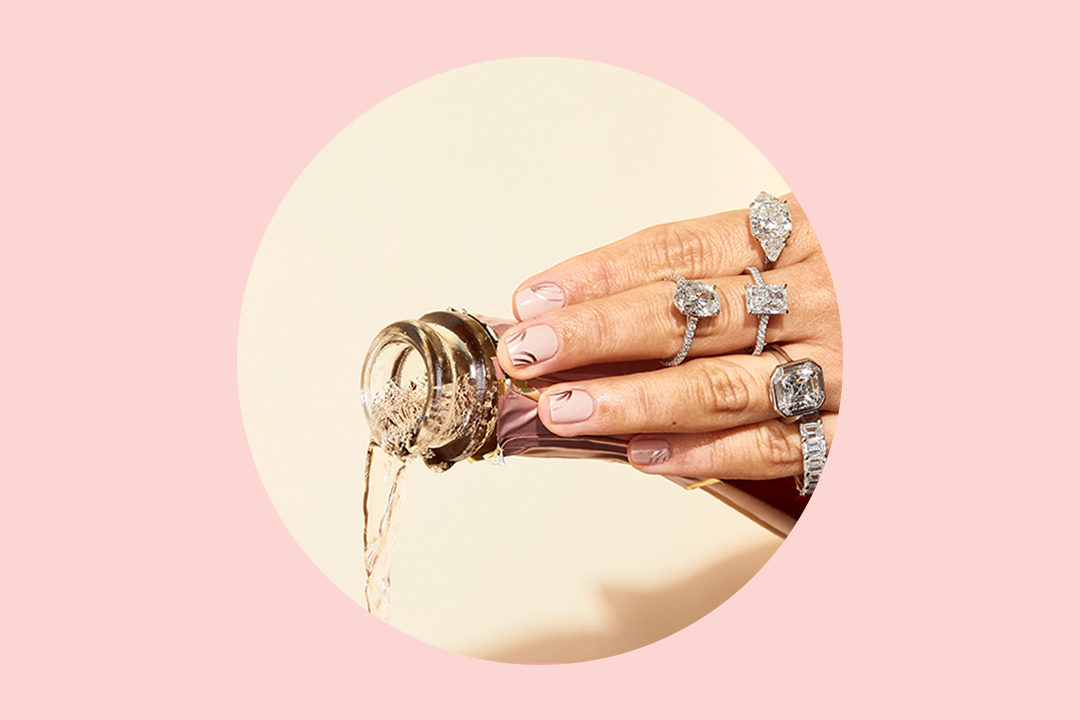
Where You Can (and Can't) Wear Your Engagement Ring
Inspiration
Diamond experts share all the places you can wear your engagement ring and where you shouldn't wear your ring. Plus, tips for keeping your engagement ring like new.
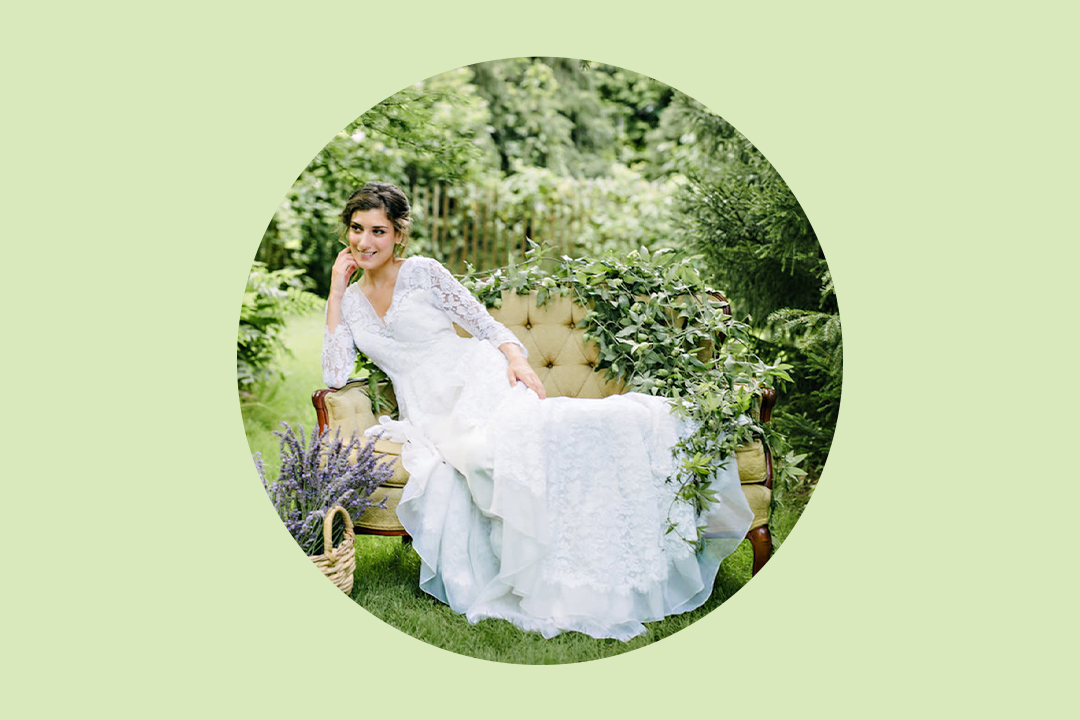
What’s Your Wedding Dress Style?
Inspiration
Finding the perfect wedding dress can sometimes feel as challenging as finding your soul mate. Luckily we’re here with a quick-and-easy quiz to help you figure out your ideal wedding style.
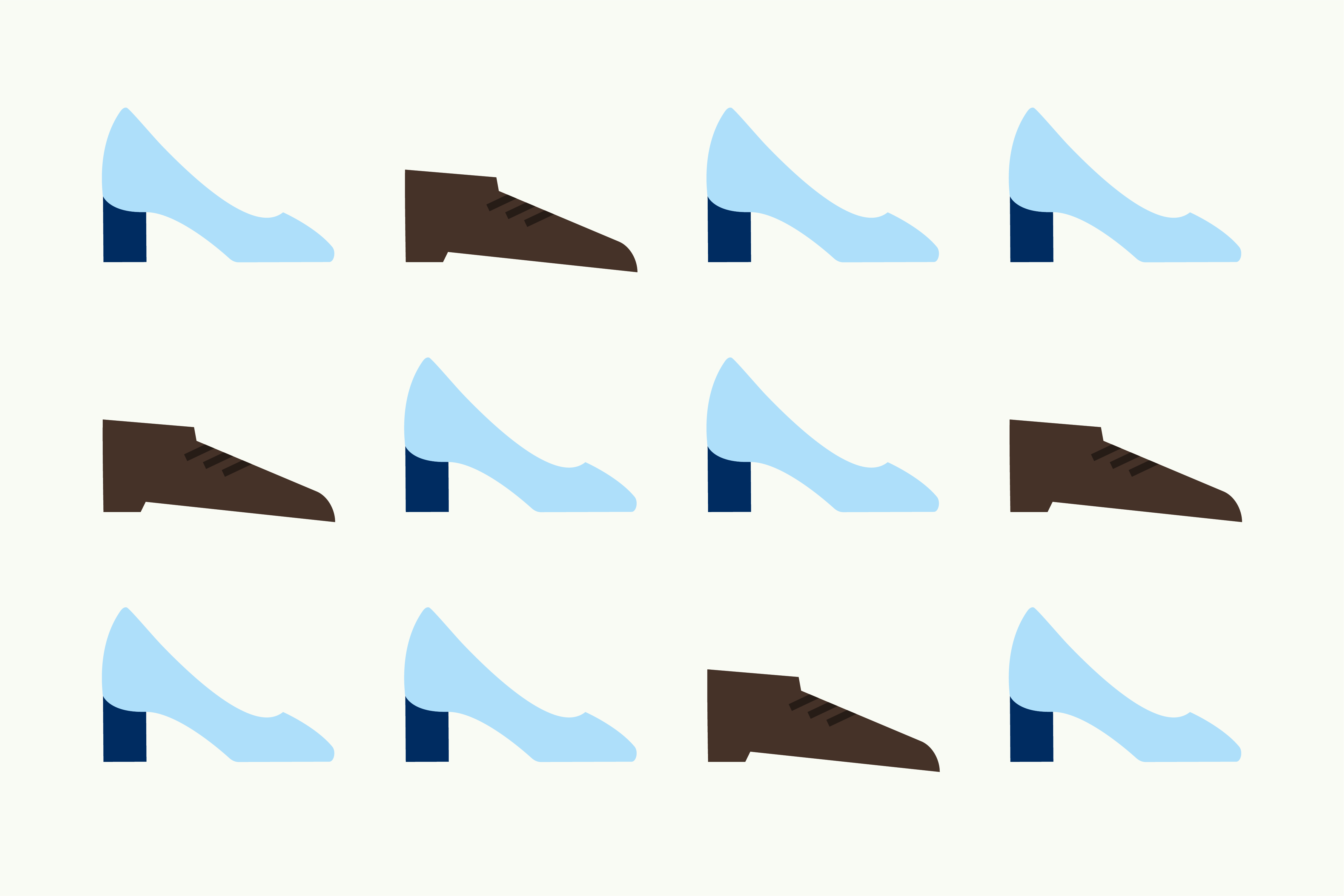
How to Choose Your Wedding Shoes
How-To
Not sure how to find the right heels or kicks for your big day? Here are some tips on choosing the perfect wedding shoes.

A Complete Guide to Wedding Attire for Grooms
Inspiration
If you’re not sure where to start when it comes to choosing wedding day clothing for men, check out our guide to groom’s attire.

A Guide to Wedding Hair & Makeup Costs
Inspiration
How much does a professional wedding hair & makeup artist cost? Find out with our ultimate guide to wedding hair and makeup costs.

How to Choose Your Wedding Colors (+ Color Palette Ideas)
How-To
Nervous about choosing your wedding colors? Don’t be: we’ve outlined some basic steps you can take to choose a wedding color palette that matches your vision and expresses your personality as a couple.
Featured
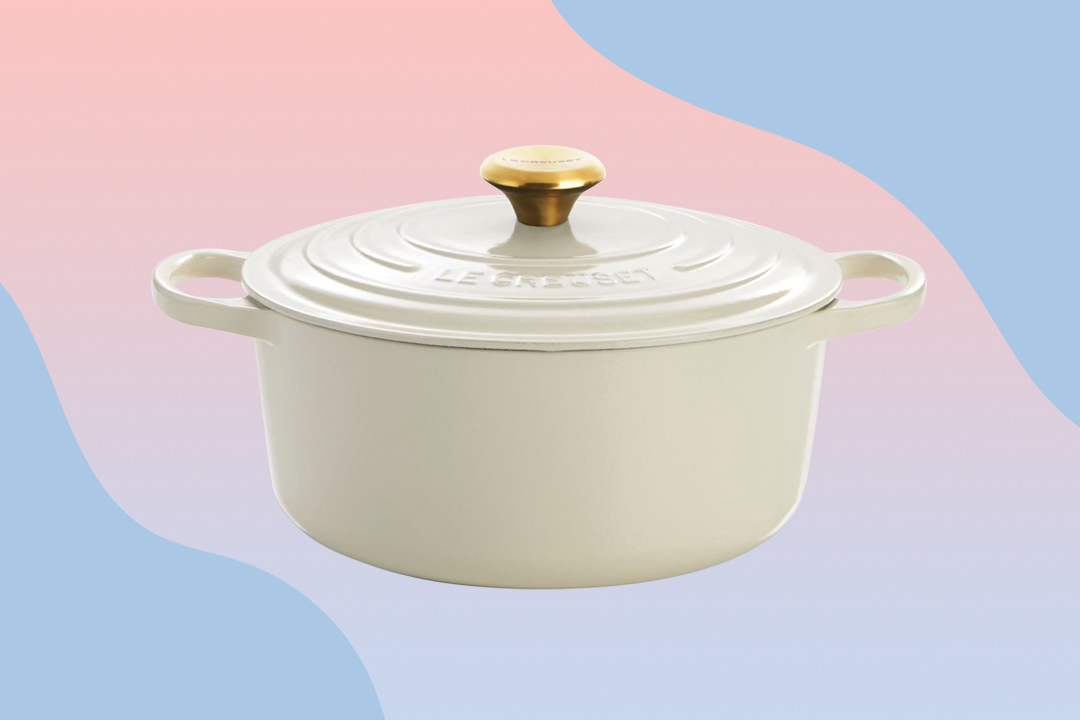
Essentials to Put on Your Wedding Registry
Inspiration
Get started building your registry with our a super-comprehensive checklist of list registry essentials, straight from our team of experts, that will cover ALL of your needs and help you build the newlywed home of your dreams.

How much does the average wedding cost in 2025?
Advice
Stay within your wedding budget! See average wedding cost breakdowns by state, guest size, and vendor service, plus money-saving tips from the experts.

How to Plan a Wedding: A Step-by-Step Guide
How-To
We’ll walk you through the steps of online wedding planning, highlighting all of Zola’s incredibly easy and intuitive online wedding planning tools that’ll make planning for the big day more fun and less frustrating.

How to Set Your Wedding Budget Step by Step
How-To
While it may not be the most exciting item on your to-do list, setting your wedding budget is essential. We’ll break down the typical expenses, guide you through the entire process from start to finish, and tell you where you can save money.
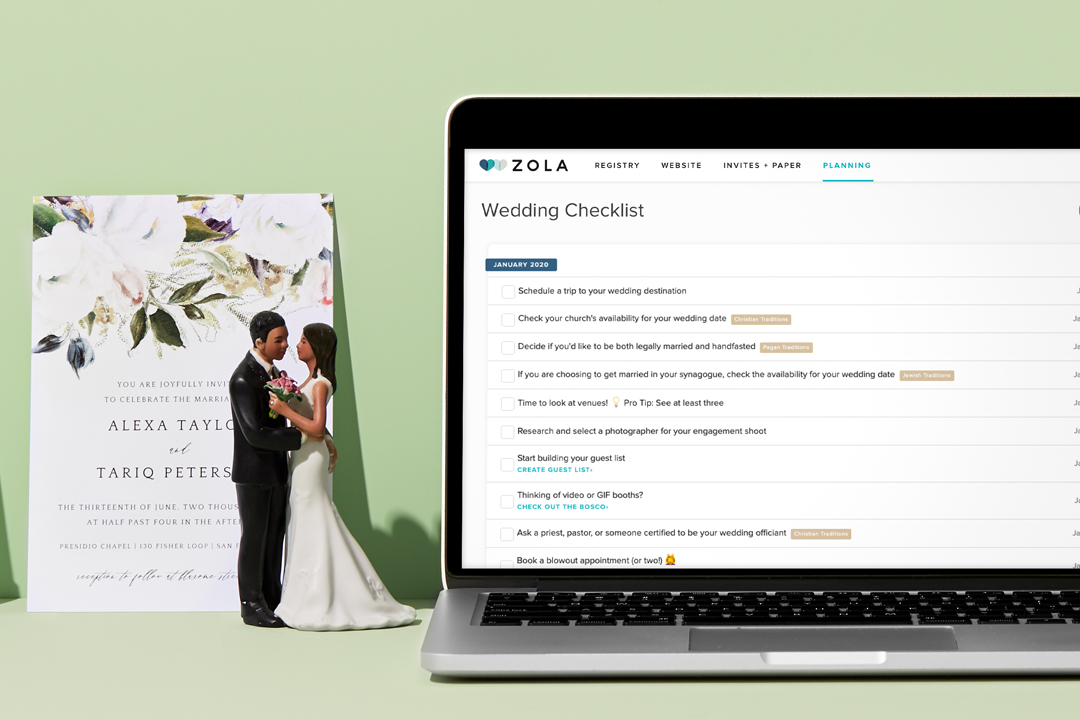
The First 10 Things to Do When Planning a Wedding
How-To
You're engaged—congrats! To help you ease into wedding planning, we’re here with a list of the very first things you should do once you get engaged.

2024/25 Printable Wedding Planning Checklist & Timeline - Zola
Don’t miss a wedding planning detail with our complete, expert-crafted wedding checklist and timeline. Free, printable version inside!
- Expert advice/
- Getting engaged/
- Rings/
- A Guide to Wedding Rings
Find even more wedding ideas, inspo, tips, and tricks
We’ve got wedding planning advice on everything from save the dates to wedding cakes.
